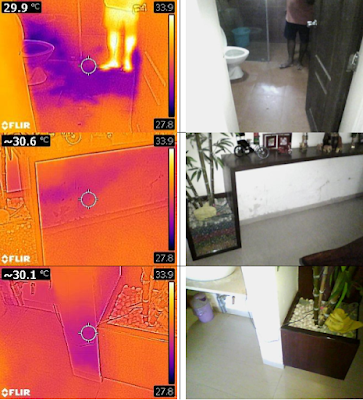With the wet and cold weather there is a
high chance that your house will be facing issues like wall dampness, fungal
walls, moulds etc. It is really a worrying and an expensive problem that many
of us have to deal with.
What is Mould?
Mould is a fungus that breaks down dead material. It loves living
in our homes, as they offer the perfect conditions for it to grow – a warm
atmosphere, moisture and food in the form of paper, wood, carpet, dust and
dirt. Unless it’s dealt with and removed, it will continue to grow. But dead
spores are just as harmful as live ones, so you should be careful when getting
rid of it.
How does mould and damp affect your health?
Moulds produce allergens (substances that can cause an allergic
reaction), irritants and, sometimes, toxic substances, says the NHS.
Inhaling or touching mould spores can cause an allergic reaction,
such as sneezing, a runny nose, red eyes and skin rash. Moulds can also cause
asthma attacks.
If you have damp and mould, you're also more likely to have or
develop respiratory problems, respiratory infections, allergies or asthma, says
the NHS. Damp and mould can also affect the immune system.
Who's Affected?
· babies and children
· elderly people
· those with existing skin
problems, such as eczema
· those with respiratory
problems, such as allergies and asthma
· those with a weakened immune
system
How to get rid of Wall dampness and moulds?
Rather than cleaning it off and leaving it, it's better to find
out the root cause for your wall dampness or source of excess moisture content
on your house, So that the problem doesn't come back. You can find the root
cause and can tackle it at its heart with the help of a Thermographic
survey. A Thermographic survey is a
collection of photographs taken by a Thermographic camera which shows the
temperature of the building as well as areas of the building having water
content or concentration. High concentration of water in certain areas of your
walls, ceiling etc caused wall dampness , wall leakage, moulds etc.
Thermographic survey is done with the
help of Infrared cameras which helps in detecting the damp
areas in the floors, walls, ceiling etc. It helps professionals in restoration process by tracking down the
source of water. Infrared cameras are a powerful tool that spots hidden water
damage before extensive damage occurs.
Infrared cameras show temperature differentials and thermal
patterns. The rainbow colored images can help identify cold spots due to drafts
or uneven insulation, but can also help to spot moisture as well.
With the help of Thermographic images we can find out the source
area, Thermal imaging cameras identify very small differences in temperature on
the surface of different materials, walls, on concretes, roofs etc highlighting
the warmer and the colder surface areas providing evidence of where the leak is
originating.
See the below image the violet colour indicates the areas having
high water concentration, in this way we can find the source of excess water
content and can fix it permanently.
For effectively tackling wall dampness and moulds you will need a help
of a Professional waterproofing contractor, We Wet2Dry Solutions has
an experience of over 15 years in providing waterproofing
services in Pune, Mumbai, Bangalore. Our Team has many years of
experience in detecting leaks and have excellent knowledge to analyse thermal
imaging results and taking the necessary actions to stop the wall leakage and
dampness permanently.


No comments:
Post a Comment